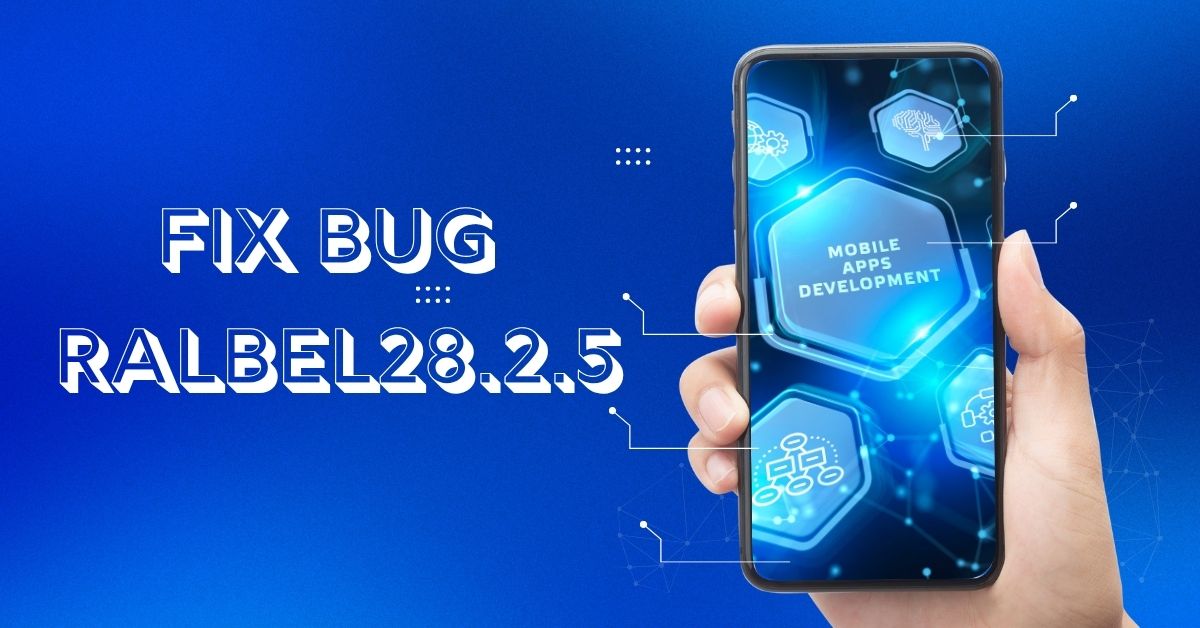Fixing bugs is an essential part of software development and maintenance. Bugs are errors or flaws in software that can cause unintended behaviors, ranging from minor inconveniences to serious crashes or security issues. The process of identifying and resolving bugs like fix bug ralbel28.2.5 ensures that applications function smoothly, securely, and as intended by developers. Ignoring bugs not only compromises user experience but can also lead to reputational and financial damage for businesses.
Overview of fix bug ralbel28.2.5
The bug labeled as ralbel28.2.5 has become a significant topic of discussion among developers using certain frameworks or libraries. This bug appears to cause instability during runtime operations, especially when interacting with dynamic UI components or real-time data synchronization. The issue is often linked to improper memory handling, outdated dependency calls, or conflict within the app’s internal modules. Resolving this bug is crucial to restoring seamless performance and avoiding data loss or crash loops.
Identifying the root cause of the bug
Before you can fix bug ralbel28.2.5, it’s essential to identify its origin. Developers usually start by replicating the bug under controlled conditions. This allows them to observe how and when the issue occurs. Log files, error reports, and user feedback help isolate the module or function where the bug originates. In the case of ralbel28.2.5, most developers report that the bug triggers during rapid interaction with API endpoints, especially when multiple asynchronous calls are made in succession.
Reproducing the error consistently
To effectively resolve ralbel28.2.5, developers must reproduce it consistently. This involves creating a controlled environment where the bug is likely to appear based on previous occurrences. Reproducibility ensures that developers can test potential fixes reliably. Common triggers include enabling debugging mode, activating verbose logging, and simulating high-load scenarios. Having a consistent replication environment allows for more efficient troubleshooting and validation of bug fixes.
Evaluating the affected components
After confirming the bug’s reproducibility, the next step is to identify which parts of the application are being affected. For ralbel28.2.5, this often includes UI rendering components, background sync services, or data caching layers. Developers must trace the flow of data and function calls using tools such as stack tracers, debuggers, and profilers. By pinpointing which classes or functions are misbehaving, teams can focus their efforts more effectively without wasting time on unrelated parts of the codebase.
Implementing a fix for ralbel28.2.5
Once the problem area is identified, the fix involves modifying the code or updating dependencies that are causing the malfunction. For ralbel28.2.5, common solutions include updating third-party libraries, applying proper error handling routines, or adding synchronization locks to avoid race conditions. Developers must ensure that these changes are minimally invasive so that they do not create new issues elsewhere in the code. Patching the bug may also involve introducing a version control update, ensuring that the fix is documented and reversible if needed.
Testing the patch in different environments
After applying the fix, thorough testing is required across various environments—development, staging, and production. Different operating systems, device types, and user behaviors must be accounted for. This step is vital for validating that the fix works universally and does not introduce new bugs. Automated testing frameworks, regression testing tools, and beta testers can help verify that the issue has been fully resolved before the fix is rolled out to all users.
Documenting the bug and the solution
Proper documentation of the bug, its symptoms, root cause, and the implemented fix is a best practice in software development. Developers using the fix bug ralbel28.2.5 label should include it in their changelogs, technical documentation, and version notes. This not only helps current team members understand what has changed but also aids future developers who may encounter similar issues. Good documentation improves maintainability, communication, and long-term reliability of the software.
Notifying stakeholders and end-users
Once the fix is stable, it’s essential to inform relevant stakeholders, including product managers, QA teams, and end-users. Users need to be reassured that the issue has been resolved and that updating their app or system will restore expected functionality. Release notes, update logs, and support documentation should clearly mention that fix bug ralbel28.2.5 is included in the latest release. Transparency during this process builds user trust and confidence in the product.
Rolling out the update carefully
Releasing the fix to the public should be done strategically. A phased rollout allows developers to monitor the impact of the fix in real-time and rollback changes quickly if unforeseen issues arise. Using deployment pipelines and continuous integration systems, teams can automate this process while maintaining control. Metrics like crash rates, error logs, and user feedback help measure the success of the fix and determine whether additional refinements are necessary.
Monitoring performance after the fix
Post-deployment monitoring ensures that the fix for ralbel28.2.5 continues to perform well under real-world conditions. Developers use telemetry, analytics dashboards, and feedback loops to track how the app behaves. Key indicators like load time, crash frequency, and memory usage offer insight into the system’s health. Continuous monitoring also helps catch edge cases that may not have been identified during testing, allowing for quick responses and iterative improvements.
Preventing similar bugs in the future
To prevent future occurrences of similar issues, development teams should perform a retrospective analysis. This involves discussing what led to the bug, how it was handled, and what can be improved in the development lifecycle. Updating code standards, conducting peer code reviews, and using automated static analysis tools can significantly reduce the likelihood of future bugs. Education and awareness also play a crucial role in ensuring that best practices are followed consistently.
Importance of collaboration in bug resolution
Fixing bugs like ralbel28.2.5 often involves collaboration across multiple teams, including developers, testers, product managers, and sometimes users. Encouraging open communication and shared accountability helps streamline the resolution process. Collaboration tools like Git, Jira, and Slack can facilitate seamless exchange of information and updates. A united approach ensures that the fix is implemented quickly and thoroughly, reducing the impact on the user experience.
Using version control to track bug history
Version control systems such as Git play an essential role in tracking bug history and managing changes. Developers working on fix bug ralbel28.2.5 should commit their changes with meaningful messages and tag releases accordingly. This practice allows teams to trace exactly when and how a bug was fixed, roll back to previous versions if needed, and audit changes for security or compliance purposes.
Community involvement and shared knowledge
Sometimes, developers outside your immediate team may have already encountered and resolved the bug you’re facing. Participating in community forums like GitHub Issues, Stack Overflow, and Reddit can provide new insights and potential solutions. Sharing your own fix for ralbel28.2.5 also contributes to the larger developer ecosystem, helping others avoid the same problem in the future and improving open-source tools or shared platforms.
Conclusion
Fixing bugs such as ralbel28.2.5 is an inevitable and vital part of software development. While the process may seem complex and time-consuming, it ensures the long-term stability and security of your application. From identifying the root cause and applying the patch to testing and documentation, every step plays a role in delivering a smooth user experience. With clear communication, careful rollout, and ongoing monitoring, your team can confidently say that the fix has restored functionality and improved performance. Treating every bug as an opportunity to learn and grow ultimately leads to stronger, more reliable software.
FAQS
What does fix bug ralbel28.2.5 refer to?
It refers to a specific identified bug within a software version that developers need to address and resolve.
Is this bug common across platforms?
It has been noted primarily in certain environments but can affect multiple platforms depending on the software’s structure.
How can I apply the fix to my app?
Follow the documented patch instructions provided by your development team or update to the latest version if it’s available.
Should users be notified about this fix?
Yes, especially if it impacts user functionality or stability. Clear communication helps build trust.
Can this bug return in future versions?
Yes, if root causes aren’t fully addressed or if related code is modified improperly. Regular code reviews and testing are essential.





